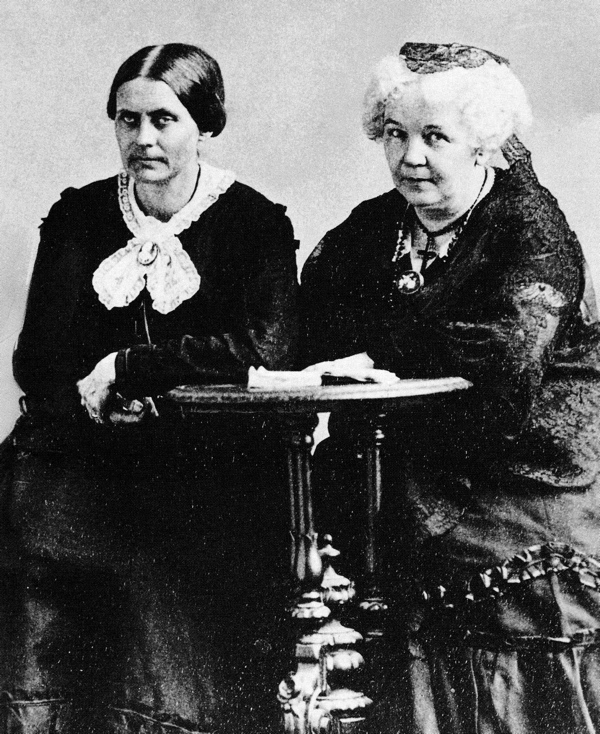Recently I was asked by a student if abortion was necessary for women to achieve equality in the workplace. Absolutely not. Consider for a moment all of the landmark reforms that our feminist foremothers, who opposed abortion, achieved in their struggle for equality in the last half of the 19th century.

In a peaceful revolution led by Susan B. Anthony and Elizabeth Cady Stanton, women won the right to keep their own earnings, sign contracts, sit on a jury, testify on their own behalf, to secure a divorce if a husband drank the family’s income away or physically abused hiswife (the courts did not recognize marital rape), and share custody of their children. When these two feminist foremothers were born, no women were admitted to college. By the time they died, colleges and universities opened their doors to women, and they started down the path to equal opportunities in the workplace.
Even less well known, anti-abortion laws enacted in the latter half of the 19th century were a result of the advocacy efforts by feminists who worked in an uneasy alliance with the male-dominated medical profession and the mainstream media. The early feminists understood that, much like today, women resorted to abortion because they were abandoned or coerced by boyfriends, husbands, or parents and lacked the financial resources to have a child on their own. So they sought legal protection from abortion.
Susan B. Anthony and Elizabeth Cady Stanton passed the torch to two more generations before women’s suffrage—their most cherished goal—was realized. By the time the struggle ended, women had suffered greatly for what too many today take for granted—or sadly, don’t exercise at all.

In 1913, Alice Paul, author of the original Equal Rights Amendment, organized a magnificent pageant to parade down Pennsylvania Avenue in Washington D.C. Women, dressed all in white, were led by New York attorney Inez Milholland Boissevain, who was dressed like Joan of Arc on a white horse. At the end of the parade, women were pulled off their horses, grabbed by jeering men as police stood by smirking. By the time the cavalry had been brought in to restore order, 100 people were hospitalized—but not one man had been arrested.
Later, a perpetual delegation of dignified, silent, peaceful protesters was organized by Paul to hold vigil outside the White House. Angry men tore their banners down. Alice Paul was knocked to the ground by a sailor and dragged down the street. Another man tore a woman’s blouse off in order to remove her purple and gold suffrage sash as the police looked on. Later, the women were arrested and forced to remove all of their clothing—one by one—in front of a company of men, and incarcerated for days, weeks, or months at time. They were fed infested food and rotting horse meat. Their mail was cut off, and they were made to perform hard labor. They were terrorized by the guards, some tossed like dolls headfirst into their prison cells and rendered unconscious. One political prisoner was left handcuffed above the cell door all night long.
Women became more resolved than ever to win the vote—and men in ever-increasing numbers began to support the fight for women’s suffrage. By the time the 19th Amendment was ratified on August 18, 1920, Inez Milholland Boissevain had died after collapsing on stage while traveling the country with her message of “votes for women.” She is known as a martyr for women’s suffrage. Susan B. Anthony and Elizabeth Cady Stanton were long deceased, but their legacy lives on today in each of us who cherishes the right of women to vote and peacefully defends the right of children to be born. Live the legacy.
By Serrin M. Foster, President
Learn more about Alice Paul:


To read more about our Feminist Foremothers, please purchase First Wave Feminists here.








